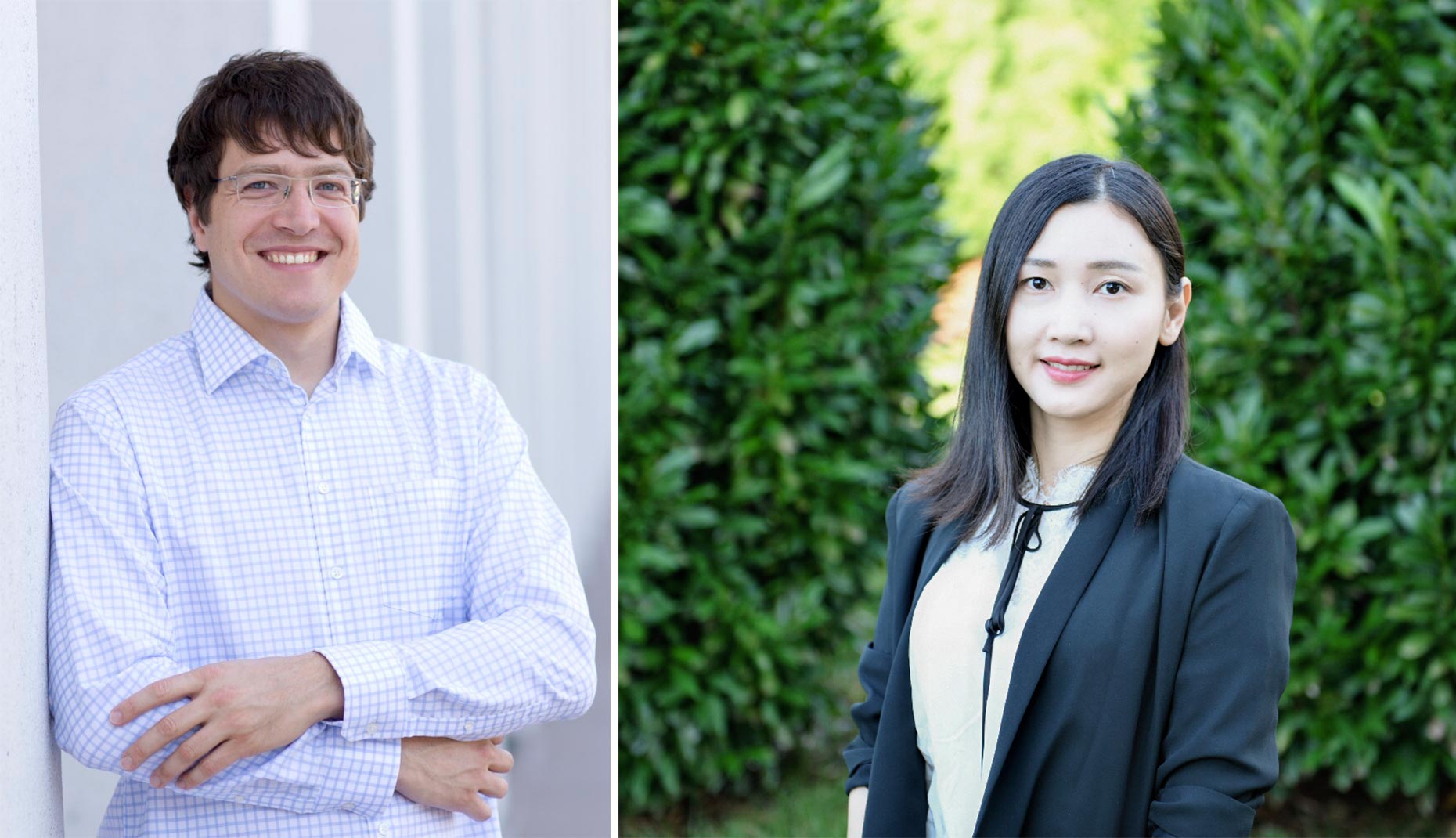Zhu and Schauss are two of 125 scientists selected to receive this year’s fellowship. One of the most prestigious awards available to young U.S. and Canadian researchers, these two-year, $75,000 fellowships are awarded annually to early career researchers identified for distinguished records of performance and their potential to make substantial contributions in their fields.
The Chemistry of Clean Energy
Zhu, as head of the College’s Nano Energy and Environmental Catalysis Lab, is focused on the science behind the production and use of clean energy and on environmental remediation. In the U.S. today, the energy and chemical industries are based primarily on the use of fossil fuels that must be converted to usable forms, a process that produces greenhouse gases harmful to the environment. With her team of researchers, Zhu is working to develop solutions that make chemical and fuel production more environmentally friendly and affordable using renewable energy.
“Everything we do is related to developing new catalytic processes for fuel and chemical production powered by clean, renewable energy sources like wind and solar that are available to us today,” Zhu said.
The technology necessary to convert sunlight into electricity has developed rapidly, but inefficiencies in the storage and distribution of that power and the cost of generating it have remained a significant problem.
One source of solar energy is derived from splitting water molecules into oxygen and hydrogen. The hydrogen produced by the process is stored as fuel in a form that can be transferred from one place to another and used to generate power upon demand.
A catalyst is needed to split the water molecules, but current catalytic materials are not efficient enough to make the process practical.
“If you use the appropriate catalyst, we can split water molecules into hydrogen and oxygen,” Zhu said. “The hydrogen can be used as a fuel source, and in this process, there is no CO2 emission at all.”
Another significant drawback of an energy infrastructure based on petrochemicals is that it produces approximately 925 metric tons of carbon dioxide or more than 2 million pounds per year. Current practices use reactions to produce hydrogen, but at the same time “it generates a tremendous amount of CO2,” Zhu said.
Her research in developing new chemical pathways for producing green hydrogen could transform the energy industry in as little as five years.
Zhu is also focused on the industrial production of ammonia, an important ingredient in the fertilizers used to produce food for the world’s growing population. The production process generates as much as three tons of CO2 per ton of ammonia produced.
Overfertilization of crops in the agriculture industry leads to the runoff of ammonia, the primary source of nitrate pollution in our groundwater, and Zhu’s group is looking for chemical solutions to reclaim ammonia from contaminated water so it can be used again for fertilizer production.
Her work in reclaiming ammonia from nitrates has also won Zhu one of the National Science Foundation’s coveted CAREER awards, which recognize the country’s most promising junior faculty members in the sciences and engineering. The award will provide additional funding for Zhu’s lab and will support educational and outreach efforts designed to encourage an interest in the STEM fields and in the science of sustainability in K-12 students.
Zhu’s receipt of the Sloan is further evidence of the importance of UVA’s green hydrogen research efforts.
“Our faculty are at the forefront of chemical research, and awards such as the Sloan Fellows demonstrate the elite level of research happening in the chemistry department and the College of Arts & Sciences,” said Jill Venton, chair of the College’s Department of Chemistry. “We recruited professor Zhu last year because of her leading research in nanomaterials and she has instantly become a key part of the energy and catalysis initiatives, including the Grand Challenge in Environmental Resilience and Sustainability and an Energy Earthshots grant from the Department of Energy.”
Exploring the Quantum Realm
From his time as a graduate student in Germany, Peter Schauss has pioneered the use of quantum gas microscopes to detect individual atoms. Now in his fifth year as an assistant professor of physics at UVA, Schauss is internationally recognized for his work with ultra-cold quantum gases and in quantum many-body physics, or the study of the behavior of ensembles of interacting quantum particles.
“Being named a Sloan Fellow is an incredible honor. It opens the door to so many possibilities,” said Schauss, who maintains his lab for ultracold quantum matter research in the College’s Physical and Life Sciences Research Building.
“Peter is extremely talented,” said Despina Louca, UVA’s Maxine S. and Jesse W. Beams Professor of Physics and chair of the College’s Department of Physics. “The Department of Physics is very proud of his accomplishments and is very happy to have someone of his caliber here.”
The development of quantum gas microscopes has enabled Schauss and other researchers to explore a broader range of physics.






